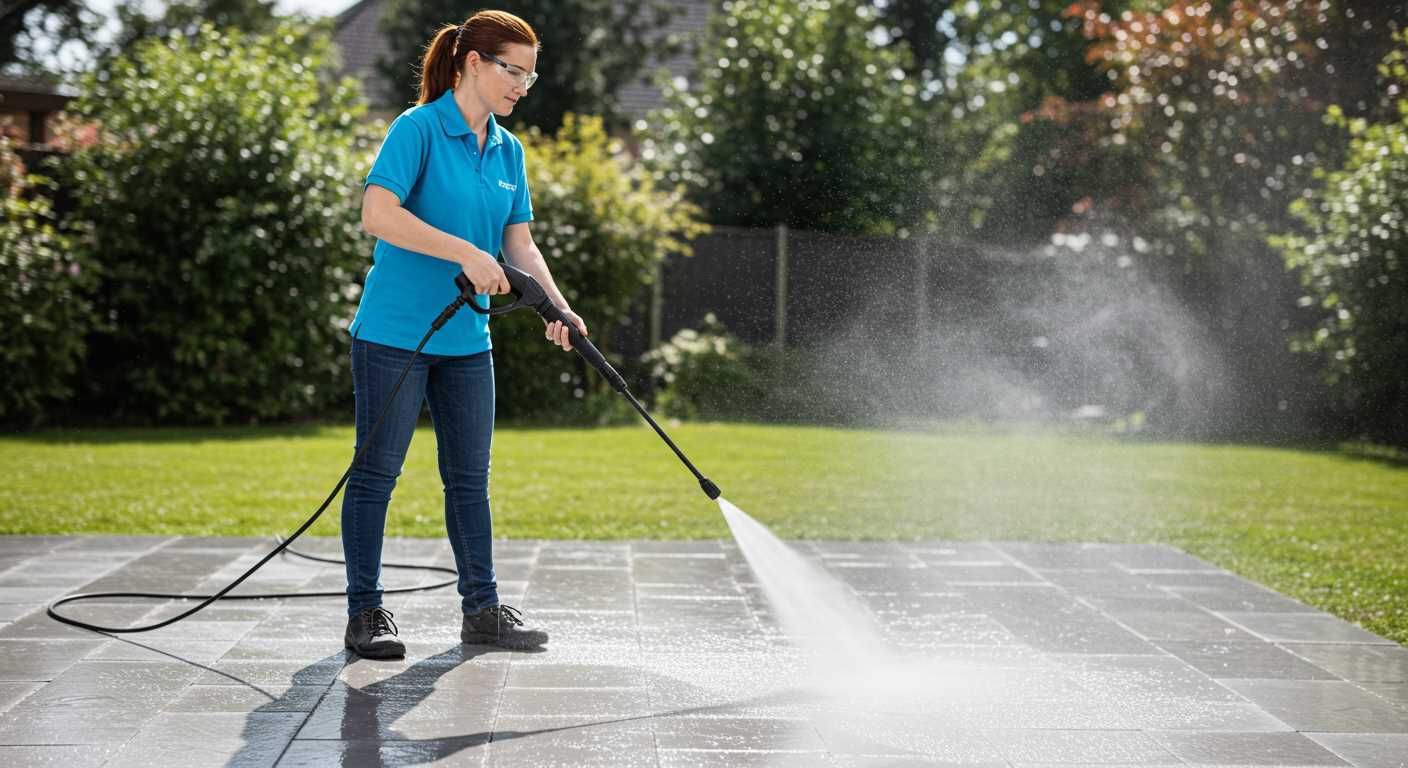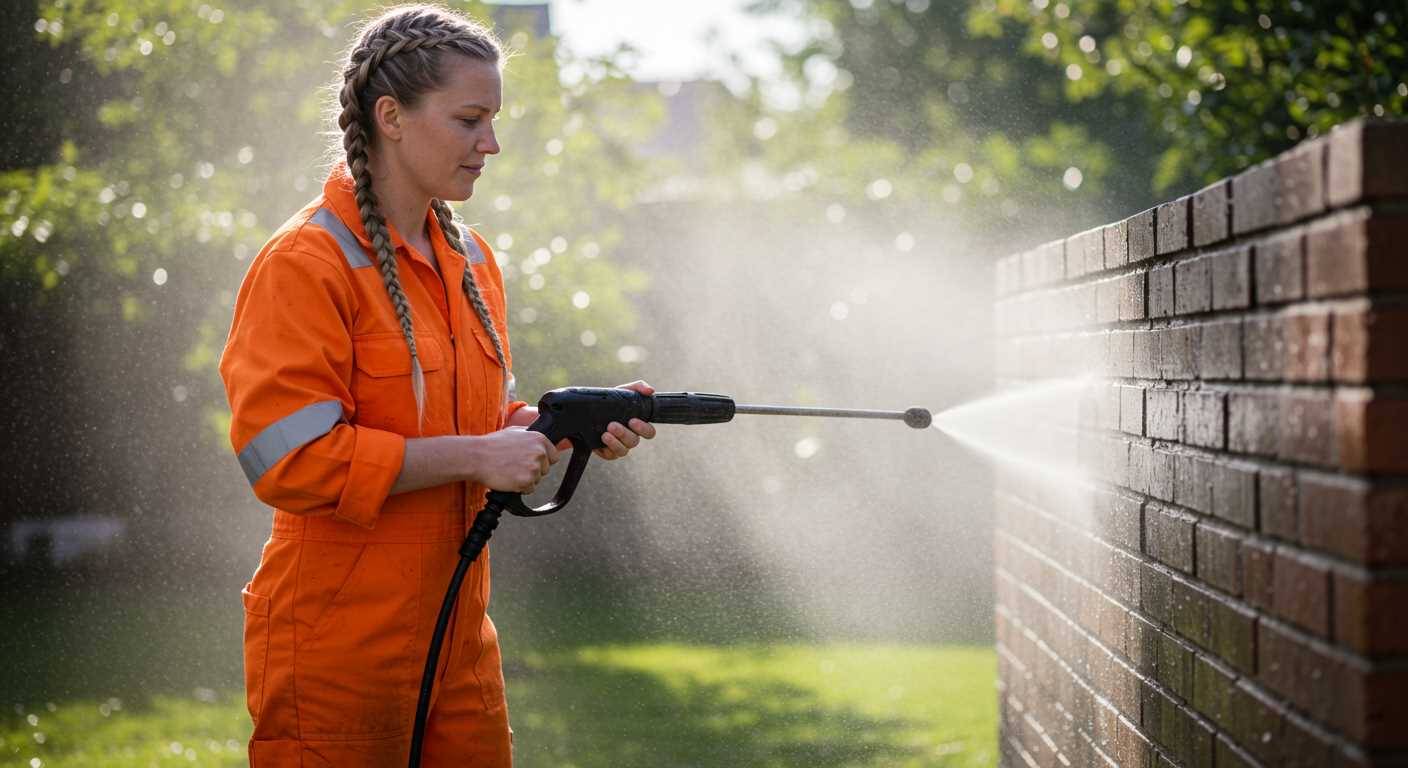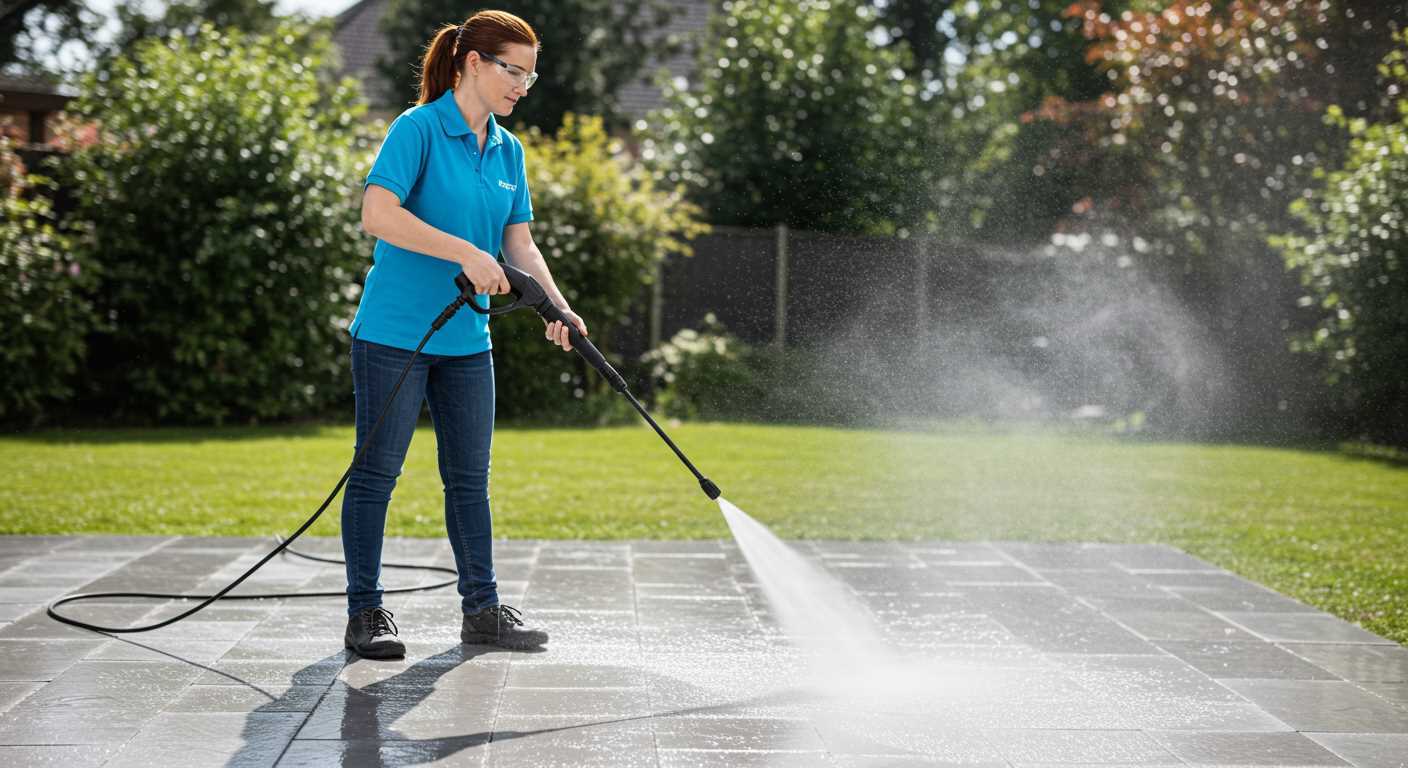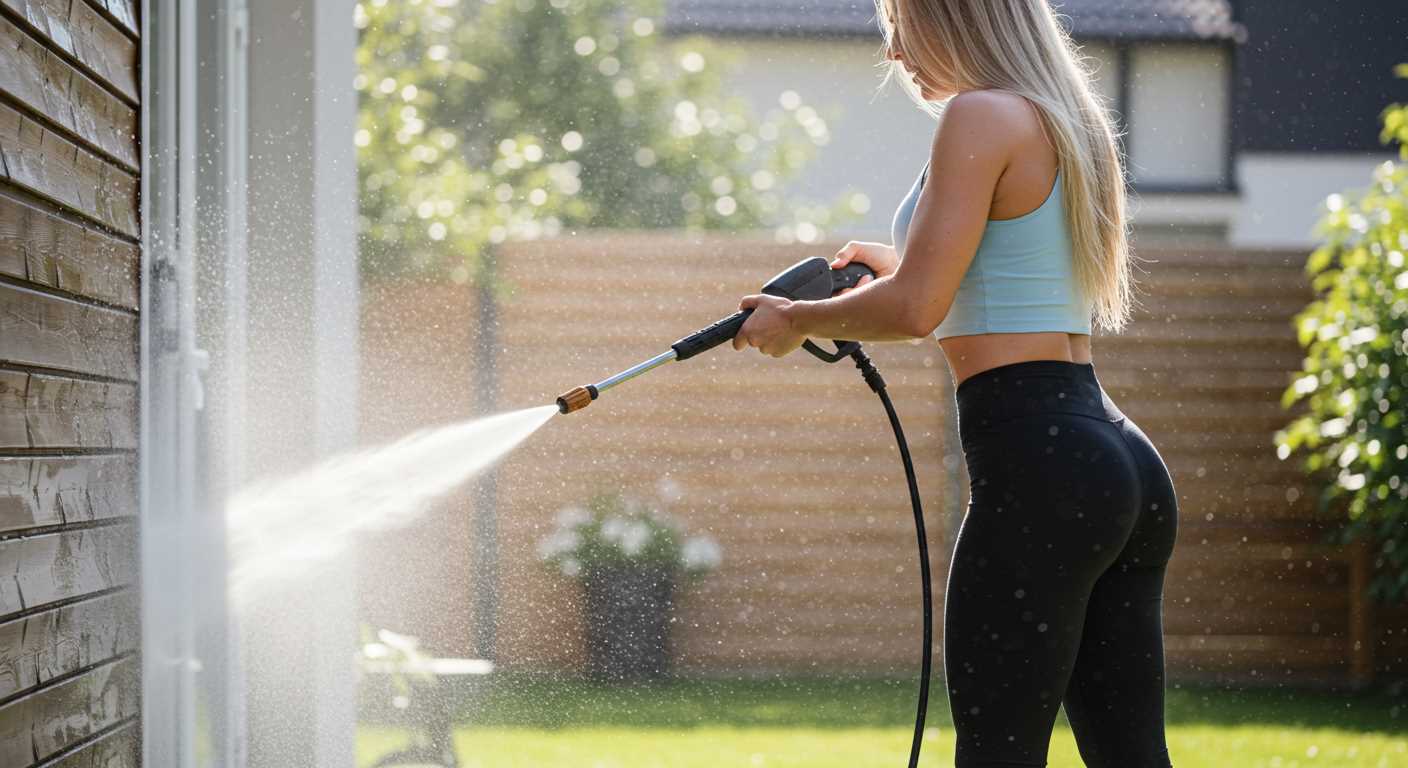


For effective cleaning, I recommend a range of 100 to 150 units of pressure. This level is particularly suited for residential tasks like washing vehicles or patio furniture. In my experience, exceeding this range can risk damaging surfaces, especially delicate materials.
During my decade in the cleaning equipment industry, I encountered numerous models. One time, I tested a unit with a pressure exceeding 200 units on a stubborn oil stain on a driveway. While it removed the stain swiftly, it left behind some noticeable pitting on the concrete. This reinforced the importance of using the right settings.
For tougher jobs, such as stripping paint or removing mildew from decks, a higher setting of around 150 to 200 units can be beneficial. However, always start at the lower end to assess the surface’s tolerance. I learned this the hard way when I damaged a wooden fence with excessive force; the results were not pretty.
Choosing the right pressure is as much about understanding your equipment as it is about the task at hand. Taking the time to adjust your settings can save you from costly repairs and ensure your cleaning tasks are completed effectively.
Optimal Pressure Levels for Cleaning Equipment
When selecting equipment, the right pressure is crucial. For most home tasks, a range of 100 to 150 bar is adequate. This level efficiently removes dirt and grime from surfaces such as patios, vehicles, and garden furniture.
For tougher jobs, like cleaning driveways or large areas with embedded stains, consider equipment pushing up to 200 bar. This strength tackles stubborn debris without excessive effort. However, be cautious; too much pressure can damage delicate surfaces.
Here are some guidelines based on specific tasks:
- Car Cleaning: 100-120 bar is perfect. It cleans effectively without risking paint damage.
- Patios and Decks: 120-150 bar provides a strong clean while maintaining surface integrity.
- Driveways: 150-200 bar may be necessary for oil stains or heavy dirt.
- Wooden Surfaces: Keep it at 100-120 bar to avoid splintering.
In my experience, starting at the lower end of the scale and adjusting as needed works best. This approach prevents unintended surface damage, especially on older materials.
Always consider your specific cleaning needs and the surfaces involved. The right balance of pressure makes all the difference in achieving optimal results without compromising quality.
Understanding Pressure Ratings in Bar
When selecting a unit, it’s important to consider the specific rating, typically ranging from 100 to 300. A model with 120 is suitable for light tasks like washing cars, while something around 200 can handle stubborn grime on patios. I recall using a 250 unit on a particularly dirty driveway; the results were impressive, cutting through years of built-up dirt effortlessly.
Common Applications and Their Requirements
For cleaning vehicles, a lower rating is sufficient. I used a 130 model for a friend’s car, which worked perfectly without risking damage to the paint. For tougher jobs like cleaning outdoor furniture or decking, aim for at least 180. That’s what I used on my own patio, and the difference was night and day.
Choosing the Right Equipment
Always match the rating to the task at hand. Higher ratings can be advantageous, but can also damage delicate surfaces if not handled with care. One time, I mistakenly used a 300 model on a wooden fence, resulting in splintering. It’s vital to choose wisely and consider the material you’re working with.
Ultimately, understanding these ratings will ensure you select the right equipment, achieving the best results without causing any damage. Investing in a unit that matches your specific needs is key to successful cleaning and maintenance.
Choosing the Right Pressure for Different Surfaces
For optimal cleaning results, consider the surface type before adjusting the settings on your cleaning equipment. Each material requires a specific level of intensity to avoid damage while ensuring effective dirt removal. Here’s a concise guide based on my extensive experience in this field.
Surface Type Recommendations
| Surface Type | Recommended Pressure (in bar) |
|---|---|
| Wood Decking | 70 – 100 |
| Concrete Driveway | 100 – 150 |
| Brick Walls | 80 – 120 |
| Car Exteriors | 40 – 80 |
| Patios | 100 – 130 |
| Glass Windows | 30 – 50 |
Additional Considerations

Pay attention to the distance from the nozzle to the surface. Closer proximity increases intensity, while a wider distance decreases it. For instance, I recall a time when I miscalculated the distance on a delicate surface, resulting in unsightly marks. Always start with a lower setting and gradually increase as needed.
When cleaning vehicles, ensure to maintain a safe distance to protect paintwork. A great resource I found recently was an article on how to can green beans with a pressure cooker, which emphasised precision in technique, much like what’s necessary here. Tailoring your approach based on specific surfaces not only enhances performance but also prolongs the life of your equipment and the surfaces being cleaned.
Common Applications and Their Required Pressure Levels
For cleaning vehicles, a setting of 100 to 120 bars is typically sufficient. I remember detailing my old car, and using a lower setting didn’t quite remove the grime from the wheels. Increasing it made a noticeable difference, allowing me to achieve that showroom shine.
When tackling driveways or patios, you’ll want around 130 to 150 bars. I once spent an afternoon blasting away years of dirt from a stone patio, and the higher pressure really helped lift the stubborn stains without damaging the surface.
For delicate surfaces like wooden decks, keep the pressure between 80 and 100 bars. I learned this the hard way; using too much force on my deck resulted in splintering. A gentler approach not only protects the wood but also ensures a thorough clean.
Cleaning garden furniture usually requires a range of 90 to 120 bars. I often use this setting for my outdoor chairs and tables, as it effectively removes dirt while being gentle enough to avoid damage to the finishes.
For industrial applications, such as cleaning heavy machinery, a pressure of 150 to 200 bars is standard. On one occasion, I worked with a construction company, and the higher levels were crucial in breaking down grease and grime that accumulated over time.
Finally, for tasks like graffiti removal, you might need 150 to 200 bars, depending on the surface material. I remember helping a local community clean up a wall covered in spray paint, and the higher pressure was essential to effectively remove the unwanted art without harming the underlying surface.
Impact of Pressure on Cleaning Time and Results
In my years of working with cleaning equipment, I’ve observed a direct correlation between the intensity of the water jet and the efficiency of cleaning tasks. Higher intensity levels drastically reduce the time needed to achieve satisfactory results. For instance, when tackling a heavily soiled patio, using a unit rated around 150-200 bars can cut cleaning time in half compared to lower settings.
From my experience, certain surfaces respond better to specific intensities. A wooden deck, for example, requires a gentler touch, ideally around 80-100 units, to prevent damage, while concrete driveways can withstand and even benefit from higher levels. I’ve seen operators make the mistake of using excessive force on delicate materials, leading to costly repairs.
In practical terms, I remember a job where a small café needed a thorough exterior clean before a busy season. With a moderate setting of 120 units, the grime came off quickly, revealing the original colours without the need for chemicals. This not only saved time but also reduced water usage, an often-overlooked benefit of using the right intensity.
Moreover, the type of dirt impacts your choice. Grease and oil, typical in garage areas, require stronger jets to break down effectively. However, a balance is necessary; too much intensity can drive contaminants deeper into surfaces instead of removing them. I’ve seen this happen with driveways when the operator opted for the maximum force without consideration.
Ultimately, selecting the right intensity is about understanding the task at hand. It’s not just about the numbers; it’s about knowing what works best for the job, ensuring both efficiency and the integrity of the surfaces being cleaned. In my experience, the right approach makes all the difference in achieving those immaculate results.
Adjusting Pressure Settings on Your Cleaning Device
To optimise your cleaning results, it’s crucial to adjust the settings accurately. Here’s how to do it effectively:
- Identify the Type of Equipment: Different models have varying methods for altering the output. Check the user manual for specific instructions.
- Locate the Adjustment Knob or Dial: This is often found on the machine near the trigger or on the body. Some devices feature a quick-connect nozzle system that allows you to change the spray pattern and intensity.
- Start with a Lower Setting: If unsure about the optimal output, commence with a lower setting to prevent damage to surfaces. Gradually increase until you achieve the desired effect.
- Test on an Inconspicuous Area: Before tackling the main job, test the adjusted output on a small, hidden section. This helps in assessing whether the power is suitable without causing harm.
- Make Incremental Changes: Adjust the settings incrementally, observing the results after each change. This method ensures you find the right level without overshooting.
- Keep an Eye on the Spray Pattern: Switching to a different nozzle can also alter the intensity. For wider coverage, use a fan spray; for tough grime, switch to a pencil jet.
- Monitor Performance: If you notice a drop in cleaning efficiency, it may indicate the need for further adjustment. Sometimes, dirt and debris can clog nozzles, requiring cleaning or replacement.
From my experience, adjusting the settings correctly can save time and enhance the outcome. I recall a project where I started with too high an output, damaging the surface. After that, I learned the importance of fine-tuning before diving into the main task.
Always prioritise safety; wear protective gear to shield against debris and chemicals. With the right adjustments, your machine can tackle various jobs efficiently, from delicate surfaces to heavy-duty cleaning.
Safety Considerations When Using High-Pressure Settings
Always wear appropriate protective gear, including safety goggles and gloves, when operating equipment with elevated settings. I recall a time when I neglected to wear goggles during a cleaning session and ended up with debris in my eye, which was both painful and distracting. Proper attire can prevent such mishaps.
Ensure the workspace is free from obstacles and that pets or children are kept at a safe distance. One incident I witnessed involved a child running toward a unit while it was in operation, resulting in a chaotic situation. Establishing a clear zone can avert accidents and allow for focused cleaning.
Check hoses and nozzles for wear before each use. A frayed hose once burst while I was cleaning a driveway, creating a sudden spray of water that startled me and nearly knocked me off balance. Regular inspections can prevent unexpected surprises and ensure a smooth experience.
Be mindful of the surfaces being cleaned; using excessive force on delicate materials can cause damage. I once used high settings on a wooden deck, thinking it would save time, only to regret the splintering that followed. Familiarise yourself with the recommended settings for different surfaces, and adjust accordingly.
Always operate equipment on stable ground. I remember a time when I was on an incline, and the unit tipped over during use. This not only caused a mess but also damaged the machine. A flat, secure surface is essential for safe operation.
Lastly, consult the manufacturer’s guidelines regarding the recommended settings for specific tasks. I’ve found that adhering to these recommendations not only enhances safety but also optimises performance. For those considering options, exploring different electric pressure washer brands can lead to discovering models that prioritise user safety.
Recommended Pressure Levels for DIY vs Professional Use
For DIY enthusiasts, a unit with a rating of around 110 to 130 bar suffices for most household tasks, such as cleaning patios, driveways, and garden furniture. In my early days, I often used a 120 bar machine for weekend projects, and it reliably tackled grime and dirt without any hassle.
When it comes to professionals, higher performance is necessary. Units in the range of 150 to 250 bar are typically required, especially for commercial applications like vehicle cleaning or heavy-duty surface restoration. I recall using a 180 bar unit for a fleet cleaning project; it cut through grease and oil in record time, saving both time and effort.
Here’s a quick comparison of recommended ratings:
| Usage Type | Recommended Pressure (bar) | Typical Applications |
|---|---|---|
| DIY | 110 – 130 | Patios, garden furniture, vehicles |
| Professional | 150 – 250 | Commercial vehicle cleaning, heavy-duty surfaces |
Choosing the right model can significantly impact the quality of your work. A few years back, I experimented with a unit rated at 150 bar for a home renovation project. It provided the perfect balance of power and control, achieving results that impressed my clients.
In summary, selecting the appropriate pressure level can enhance efficiency and results. My experiences highlight how vital it is to match the machine’s capabilities with the task at hand. Whether it’s a simple DIY job or a professional service, understanding these ratings is key to successful cleaning.





.jpg)


